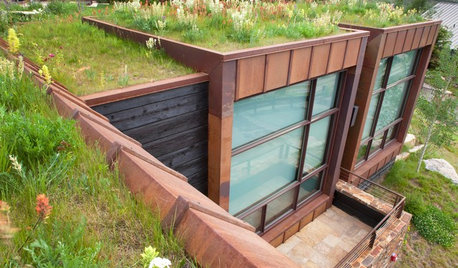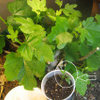Calculating 'actual nitrogen' in bag of fertilizer
ginjj
14 years ago
Related Stories

GARDENING GUIDESGet on a Composting Kick (Hello, Free Fertilizer!)
Quit shelling out for pricey substitutes that aren’t even as good. Here’s how to give your soil the best while lightening your trash load
Full Story
GARDENING GUIDESHow to Switch to an Organic Landscape Plan
Ditch the chemicals for a naturally beautiful lawn and garden, using living fertilizers and other nontoxic treatments
Full Story
EARTH DAYThe Case for Losing the Traditional Lawn
Work less, help the environment and foster connections by just saying no to typical turf
Full Story
EDIBLE GARDENSHow to Add an Apple Tree to Your Edible Garden
Readily available, beautiful and fragrant, apple trees offer four-season interest along with crisp, juicy fruit
Full Story
FALL GARDENING5 Ways to Put Fall Leaves to Work in Your Garden
Improve your soil and yard the organic way with a valuable garden booster that grows on trees
Full Story
FARM YOUR YARDHow to Get Good Soil for Your Edible Garden
The nutrients in your soil feed the plants that feed you. Here are tips on getting it right — just in time for planting season
Full Story
GARDENING GUIDESGarden Myths to Debunk as You Dig This Fall and Rest Over Winter
Termites hate wood mulch, don’t amend soil for trees, avoid gravel in planters — and more nuggets of garden wisdom
Full Story
GARDENING GUIDESNew Ways to Think About All That Mulch in the Garden
Before you go making a mountain out of a mulch hill, learn the facts about what your plants and soil really want
Full Story
GREEN BUILDING6 Green-Roof Myths, Busted
Leaky, costly, a pain to maintain ... nope, nope and nope. Get the truth about living roofs and see examples from simple to elaborate
Full Story
FARM YOUR YARDHow to Grow Vegetables in Containers
Get glorious vegetables and fruits on your patio with a pro’s guidance — including his personal recipe for potting mix
Full Story






fruitnut Z7 4500ft SW TX
tantanman
Related Professionals
Panama City Landscape Architects & Landscape Designers · Alpharetta Landscape Contractors · Fair Oaks Landscape Contractors · Fort Myers Landscape Contractors · Kailua Landscape Contractors · Kearny Landscape Contractors · Middleton Landscape Contractors · Midland Landscape Contractors · Norwalk Landscape Contractors · Rockville Landscape Contractors · Roswell Landscape Contractors · Stony Brook Landscape Contractors · Reisterstown Landscape Contractors · Laguna Beach Stone, Pavers & Concrete · Centerville Stone, Pavers & Concreteashleysf
ginjjOriginal Author
MrClint
geekygranny
BarbJP 15-16/9B CA Bay Area
johnmerr